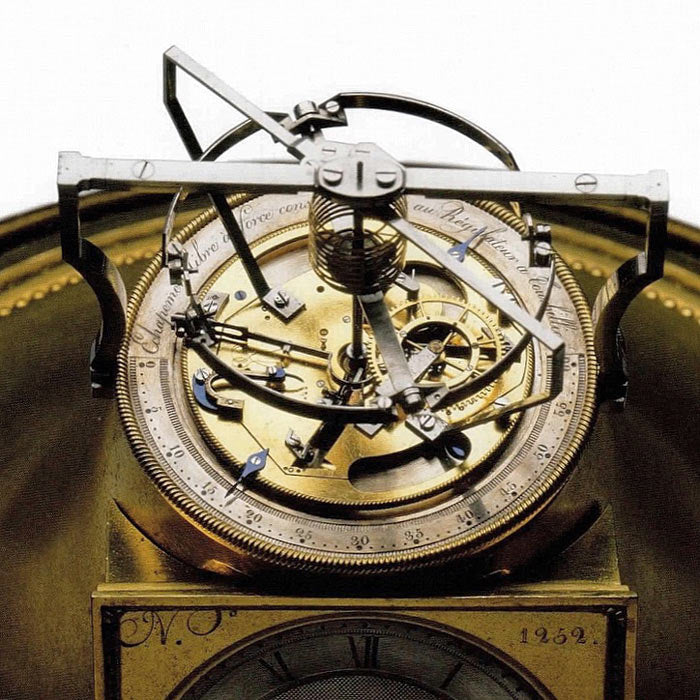What Is A Tourbillon Watch?

There are many things in the world of horology that both fascinate me and confound me. To be more precise, I don’t always get the appeal expressed by watch collectors and enthusiasts. For a long time, I didn’t exactly understand how a mechanical movement functioned. I watched countless videos and read dozens of articles on the subject in an effort to understand what makes a movement tick, what properties one should look for in a mechanical movement, etc. One aspect of mechanical horology that has remained quite mysterious to me, therefore, is the tourbillon. For a long time, all I knew is was that people raved about it. Any watch featuring a tourbillon was immediately praised and highly sought-after. But what is a tourbillon exactly? What advantages, if any, does it provide?
 Source: www.monochrome-watches.com
Source: www.monochrome-watches.com
Who Invented the Tourbillon?
Have you heard of a small, mystical watchmaker called Breguet? In all likelihood, you probably have. Breguet was founded in 1775 by Abraham-Louis Breguet and has perhaps has the most stereotypical Swiss history of any brand still around to this day. Breguet is a great example of how Switzerland became the world’s center for horology as I discussed in this article. In a nutshell, the Huguenots, who were French and German protestants, fled to Switzerland at the beginning of the 16th century and brought with them their know-how in watchmaking. Abraham-Louis Breguet was born from Huguenot parents in Neuchâtel and is responsible for such inventions as the first self-winding watch (1780), the first wristwatch (1810), as well as the tourbillon (1795).
 Source: www.timeandwatches.com
Source: www.timeandwatches.com
What Is the Purpose of a Tourbillon?
One thing that we watch enthusiasts obsess over when it comes to mechanical movements is accuracy. How many seconds does a movement gain or lose per day, what can be done to make it more accurate and reliable, and which brands make the best ones? The problem, it seems, has always been this darn thing called gravity that Christopher Nolan’s Interstellar talked so much about. In a nutshell, gravity can affect the accuracy of a mechanical movement depending on how close to the surface of the earth we are. The closer we are to the surface, the more effect gravity has on the balance wheel and escapement, therefore the slower it runs. Theoretically, the balance wheel and balance spring can operate at a constant rate regardless of the angle of the watch or its distances from earth’s surface.

Source: www.timeandwatches.com
Breguet’s idea was to create a system by which the balance wheel and escapement would be in perpetual and continuous rotation regardless of how much one wears the watch or where one wears it. This is important because it is the combination of the balance wheel, balance spring, and escapement assembly that dictates the accuracy of a mechanical movement. This is why, for example, the invention of paramagnetic hair springs was crucial to make movements more accurate, especially for pilots who would be wearing a watch further away from earths’ surface, therefore where gravity has lesser impact. This would mean the watch would run faster.
 Source: www.esquire.com
Source: www.esquire.com
The First Tourbillon by Breguet
Breguet created the first tourbillon in 1795 and later patented it in 1801. Inside a tourbillon cage, the balance wheel, which normally does not move, oscillates while turning at 360 degrees. This oscillation, in theory, protects the balance wheel and escapement from the effects of gravity which makes the movement more accurate. From what I can tell, moderns tourbillons are more of an elegant display of haute horology than a useful complication as standard mechanical movements have become more accurate. Again, protecting movements from magnetic fields found in the natural world, or in our daily lives (all the machines we surround ourselves with), does more to keep a watch accurate than a tourbillon.
 Source: www.timeandwatches.com
Source: www.timeandwatches.com
Final Thoughts
I’ve seen tourbillon watches in the metal and it is indeed mesmerizing to see this tiny sphere oscillate on its own axis. Generally speaking, watches with this feature tend to fetch higher prices, although in the past few years, we’ve seen a democratization of tourbillons thanks to Chinese movement manufacturers. What are your thoughts on tourbillons? Would you buy one? Please share your comments below.
Featured image: www.tatlerasia.com









Leave a comment